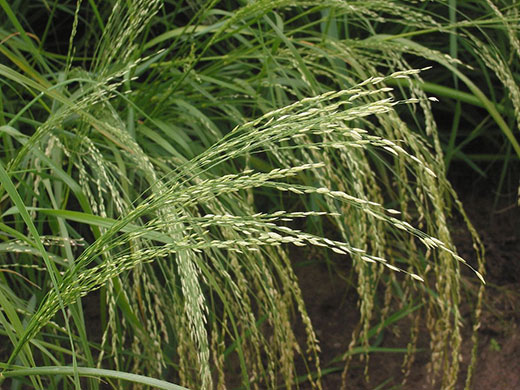Manhattan, Kansas, USA
June 16, 2020

Teff is a warm-season grass that can offer two to three cuttings per year.
Anyone with a gluten sensitivity may be familiar with teff (Eragrostis tef), a cereal crop from Ethiopia that is gluten free and often used in cooking.
But they may be surprised to know that it is also gaining popularity as a grass grown for hay production and cattle grazing.
“Teff is a warm season annual grass that is being grown in the U.S. as a forage hay crop,” said Jaymelynn Farney, associate professor and extension specialist with Kansas State University’s Southeast Agricultural Research Center in Parsons.
“Once teff is established, producers are able to get two to three cuttings per year,” said Farney, a recent guest on the Beef Cattle Institute’s Cattle Chat podcast. “It is also a fine stem grass that is a good substitute for alfalfa for horses that have metabolic issues.”
The challenge can be in getting it to grow, Farney said.
“It is a very fine seed and getting it established is an issue. When we make the seed bed, we often use a cultipacker. If you drill deeper than 1/8-inch it will not grow,” Farney said, noting another drawback for some producers is that it has to be planted each year.
An advantage is that teff is drought tolerant and grows rapidly. She said the quality can quickly deteriorate if it isn’t cut when it first reaches maturity.
“I’ve seen teff go from perfect quality to poor quality in three days,” Farney said.
Along with growing teff for hay, Farney said it can also be grazed with the right management plan.
“Teff is a shallow rooted plant so it can’t be grazed until 45 days after it was planted or roughly the same time you would take that first cutting of hay,” Farney said. She cited a study in Oklahoma in which 850 stocker calves were raised on 320 acres of teff over the summer, and said the cattle thrived.
For cattle producers interested in using teff in a grazing management plan, “I recommend they get the first cutting of hay and then let it regrow a couple inches before turning out cattle to graze it,” Farney said. The first cutting typically provides the highest nutrient quality.
For a brief overview of teff production and grazing, tune into the BCI Cattle Chat podcast.
For more in-depth information on growing teff, listen to a podcast that Farney recently launched called Dr. Js Beef. Episode 2 features the attributes of teff grass as a forage.